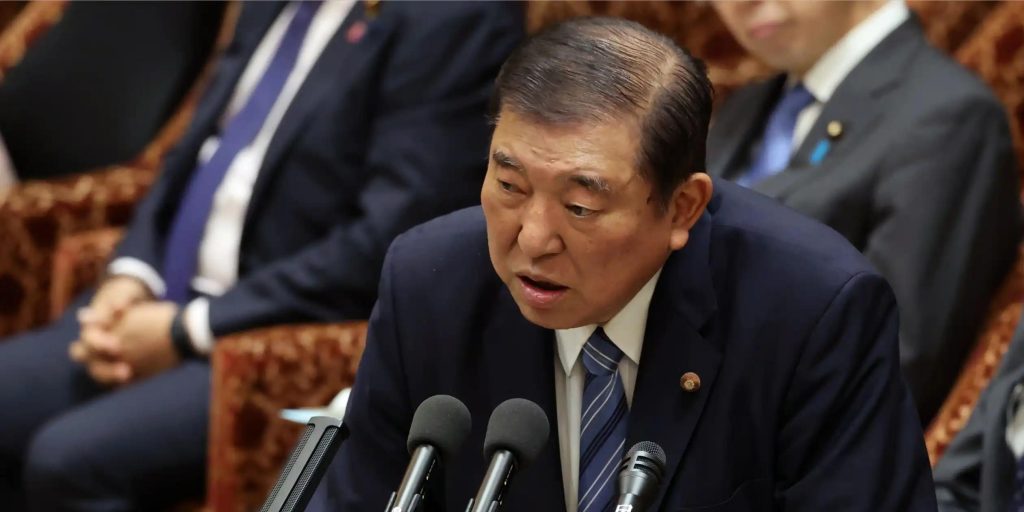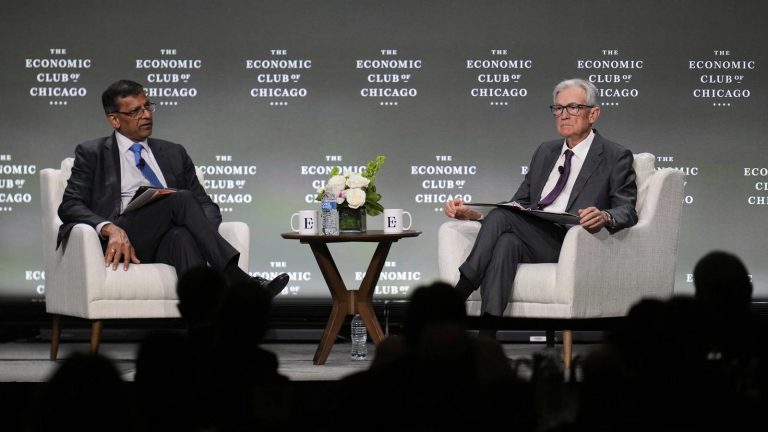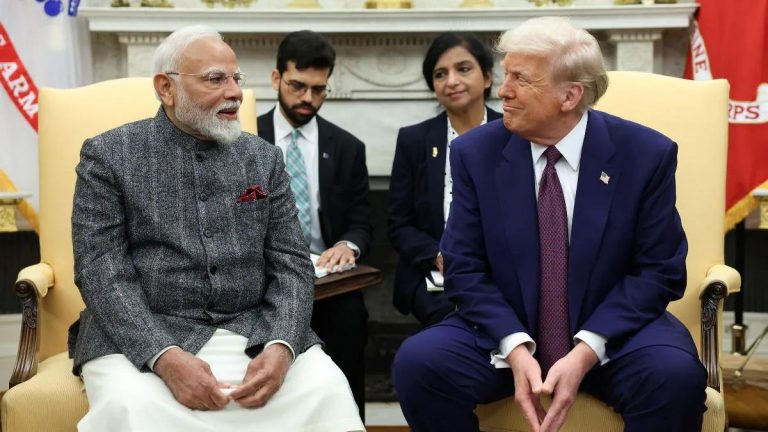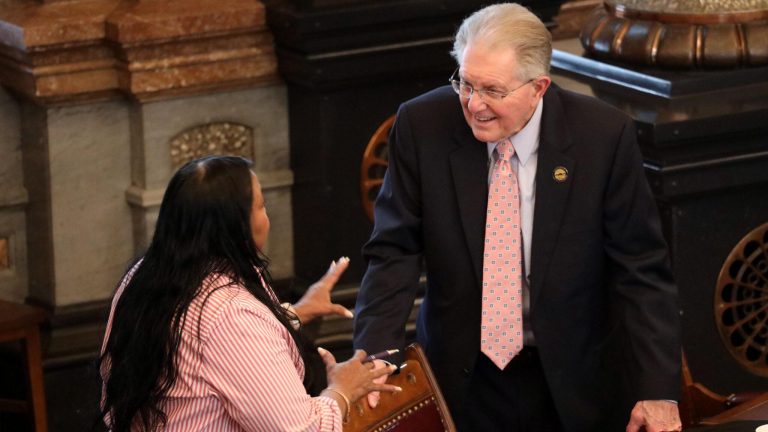
Japan Holds Firm as Trump Pressures Mount in Trade Talks | Image Source: asia.nikkei.com
TOKYO, Japan, 14 April 2025 – As geopolitical and economic landscapes continue to change under pressure from US tariff policies, Japanese Prime Minister Shigeru Ishiba gave a clear message: Japan will not rush into concessions, even if the bets are high. This happens when the trade negotiations between Japan and the United States are ready to begin on April 17 in Washington – negotiations that can not only redefine bilateral relations, but also echo other global economies that are reinforced by the impact of the aggressive trade position of the United States under President Donald Trump.
“We are not in a position where we have to make big concessions just to put an end to the negotiations quickly,” said Ishiba in a parliamentary session, which takes a tone that combines prudence and strategic patience. Although Japan remains a key ally of the United States, persistent tariffs – particularly the 25 per cent car export duty – demonstrate the resilience of this long-standing partnership. As shipments of cars account for about 28% of Japan’s total exports to the United States, economic pressure is more than symbolic; It is structural.
Why is Japan taking a harder line this time?
The resistance of Japan is more than cars or money. That is a signal for the international community. According to Reuters, Ishiba stressed the need to understand both the logic and the emotional logic behind Trump’s global view of pricing. The underlying message? Negotiating with the United States under this administration requires more than data – diplomacy rather than ego, perception and domestic politics.
In part, that is why Japan has avoided retaliatory rights, despite the fact that its economy is aggravated by the universal rate of 10 per cent and specific sectoral rights. Instead of climbing, Tokyo is pointing towards a strategic escalation. “By negotiating with the United States, we need to understand what underpins Trump’s argument in terms of logic and emotional elements behind his opinions,” said Ishiba. It is a diplomatic approach, but also a high-level act, as markets closely monitor signs of political error.
Q: What makes this round of negotiations different from past talks?
A: Unlike previous trade negotiations, this cycle is taking place in a context of growing global protectionism, monetary volatility and tense geopolitical alliances. Japan’s approach is now more defensive and calculated, with the aim of preserving economic stability and strategic autonomy.
Economic risks and monetary dilemmas
The economic consequences of tariffs go far beyond the trade balance. According to the Governor of the Bank of Japan Kazuo Ueda, US tariffs inject volatility into an already uncertain global economy. He warned Parliament that “US tariffs are likely to put pressure on world and Japanese economies through various channels”
These “channels” are numerous: weakening investor confidence, possibly disrupting the supply chain and, perhaps, exchange rate instability. The appreciation of the Japanese yen, partly fed by a sale of dollars, became a double-edged sword. While reducing import costs, it is more detrimental to Japanese export-dependent sectors. Goldman Sachs Japan Director Akira Otani told Reuters that if the yen approaches 130 against the dollar, the BOJ can stop its price increases. But a sudden jump beyond 160 could have the opposite effect, pushing the speed increases to try to stabilize the piece.
Finance Minister Katsunobu Kato also weighed, stating that the United States and Japan agree that ”excessive market volatility would have negative effects on the economy.” However, the Trump administration’s allegations of currency manipulation are entertaining, adding another layer of complexity to the already tense talks.
Q: How does the weak yen impact Japan’s position?
A: Although a weaker yen traditionally benefits exporters in recent years, it has been a mixed blessing. It increases import costs, releases household consumption and inflates fuel prices. With the US review of Japanese monetary policy, a weak yen could become more than a tool.
Trump Commercial Doctrine: Pressure first, treatment after
Trump’s administration continues to exercise tariffs such as shield and sword. A universal rate of 10% is maintained for all trading partners, with higher rates in key sectors such as steel, aluminum and cars. For Japan, whose exports to the United States amounted to $148.2 billion in 2024, compared with only 79.7 billion imports, the imbalance is a key objective.
Trump considers this deficit, $68.5 billion in 2024, according to the Office of the United States Trade Representative, as evidence of an unfair relationship. This narrative supported his broader economic strategy “America First.” By targeting major trading partners such as Japan, the administration is seeking benefits, not only on trade, but on greater strategic alignments in the Pacific.
As Riley Walters of the Hudson Institute said:
“The negotiations between the United States and Japan will be an interesting case study. Other governments can learn to negotiate with the Trump administration on trade and economic issues. »
In this sense, Japan’s calculated resistance is not only a national interest, but a precedent. If Tokyo can maintain balance without looking at pressure, it could serve as a diplomatic plan for others sailing on similar bases.
Monetary conversations and political calculation
Currency manipulation has long been a controversial issue between the United States and Japan. The slow pace with which the Bank of Japan increased interest rates relative to the United States Federal Reserve raised suspicion in Washington. President Trump has already accused Tokyo of artificially keeping the yen down to boost exports, claiming that Japan denies.
In the coming negotiations, exchange rates will fall under the jurisdiction of Finance Minister Katsunobu Kato and US Treasury Secretary Scott Bessent. Although formal monetary policy decisions remain the responsibility of the Justice Council, any commitment to monetary stability could have an indirect impact on future rate increases or their absence.
But the government of Ishiba has so far resisted calls for immediate tax intervention. While some legislators are demanding cash payments or tax reductions to cushion the economic impact, Ishiba has excluded an additional budget for the time being. Rather, he stressed the willingness to act “in a timely manner” if the situation worsens.
Q: Is Japan considering any retaliatory tariffs?
A: No, Prime Minister Ishiba has specifically excluded retaliation for the time being, preferring diplomacy and a more in-depth analysis of escalation. However, it has not excluded national incentives if the economic impact is intensified.
Pacific partnerships and strategic balance
Although tariffs are at the forefront, strategic considerations are below the surface. According to Japan’s Ministry of Foreign Affairs, Ishiba and Singapore’s Prime Minister, Lawrence Wong, phoned this week to affirm their common interest in maintaining a rules-based international order in the Pacific Indo. As the US revolves around its strategic approach to China, Japan’s position as a geopolitical base becomes even more crucial.
The schedule of these trade talks also coincides with a new debate on the United States-Japan security treaty. Although Ishiba did not propose to amend the pact, Trump’s recent comments questioning his equity have injected a note of uncertainty. For the time being, the alliance holds, but mutual trust can be tested more if trade friction worsens.
Trade, currency, security – these are not isolated problems. They’re wires in a complex tapestry. How the United States and Japan choose to weave them together could strengthen a resilient partnership or degenerate decades of carefully managed diplomacy.
Q: Could trade tensions impact security alliances in Asia?
A: Yes. Although in principle separate, trade and defence are increasingly linked. Japan remains a key player in the Indo Pacific strategy, and any changes in economic relations could mature in regional defence and stability partnerships.
When the first round of negotiations begins on April 17, all eyes will be in Washington. The stakes are not limited to trade imbalances or car imports, but cover the same frameworks that define the post-war global economic and security order. And as Ishiba pointed out, understanding the emotional calculation behind Trump’s policy is as critical as analyzing the numbers.
If this approach produces a lasting agreement – or simply delays a deeper break - it remains to be seen.



